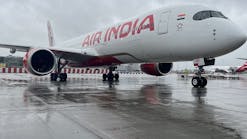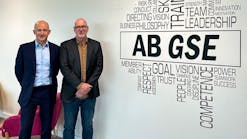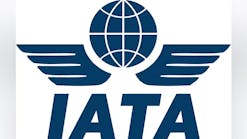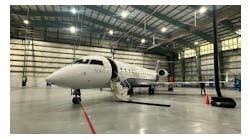May 22--NEW YORK -- The government failed to properly test the Boeing 787's lithium-ion batteries when it was originally certified and relied too much on Boeing for technical expertise, a new report says.
The National Transportation Safety Board (NTSB) Thursday also said that even now -- a year after the 787s returned to the air -- the current standard for lithium-ion battery design and safety "does not address all of the unique aspects of a battery's installation on an aircraft."
The NTSB said Boeing and other airplane manufacturers "need to evaluate whether additional requirements and testing are necessary to ensure aircraft-level safety."
In criticizing the process used by the Federal Aviation Administration to certify the original Dreamliner battery system in 2007, the NTSB also recommended that the FAA needs to look outside the aviation industry for technical advice.
The report directly conflicts with the FAA's own internal study released in March, which said the agency had "effective processes in place to identify and correct issues that emerged before and after certification."
In response to the NTSB report, Boeing in a statement said "the testing performed on the 787's original lithium-ion batteries during certification was consistent with the widely-accepted industry standards of that time."
However, Boeing added that "certification standards should and do evolve as the state of knowledge advances."
The company will support efforts to upgrade certification testing to incorporate such advances, it said.
Boeing said it will work with the FAA as it considers the NTSB's recommendations.
The jetmaker also noted that when it devised its engineering fix for the 787 lithium-ion battery last year -- enclosing the batteries in a heavy steel box, with a system of titanium tubes to vent any hot gases outside the plane -- the solution was put through "rigorous certification testing before the 787 returned to service last year."
That process included "tests that are fully consistent with the recommendations made by the NTSB today," Boeing said in the statement.
"We therefore remain confident in the safety and integrity of the comprehensive battery solution which was developed by Boeing, and approved by the FAA."
However, the Boeing fix in 2013 was tested to an industry standard that the NTSB has now declared potentially inadequate.
The 787 -- also known as the Dreamliner -- is the first commercial jet to rely on rechargeable lithium-ion batteries to power key systems. The batteries are lighter, letting airlines save fuel.
However, a January 2013 fire aboard a 787 parked at a gate in Boston broke out when one of a battery cell experienced an uncontrollable increase in temperature and pressure, known as a thermal runaway.
Nobody was injured, but that fire -- and a subsequent smoke condition on a separate plane nine days later -- led to a worldwide grounding of the Dreamliner fleet.
Boeing's solution to the problem, which took a couple of months to engineer, was tested by the FAA to a more rigorous standard than had been used during the original certification process.
This higher test standard had been devised by a committee of government and industry experts in 2008, after the 787 certification plan had already been agreed upon.
The re-engineered battery system passed the tests and in May 2013, following a grounding that lasted 14 weeks, 787s resumed flying after Boeing installed the fix on the airplanes. There are now 140 Dreamliners operating around the world. Another 891 have been ordered by airlines.
In its report Thursday, the NTSB suggests that this more rigorous testing standard still may not cover all possible eventualities.
It recommends that the FAA develop more stringent tests that would "replicate the battery installation on the aircraft and be conducted under conditions that produce the most severe outcome."
The safety board says the problems that caused the initial 787 battery overheating incidents go back to September 2004, when Boeing first told aviation regulators of its plans to use lithium-ion batteries on the 787.
The FAA was forced to create the first-ever requirements for use of lithium-ion batteries on commercial jets.
One of the nine requirements the FAA came up with was that the "design of the lithium-ion batteries must preclude the occurrence of self-sustaining, uncontrolled increases in temperature or pressure." In other words, no thermal runaways.
However, the NTSB report concludes that, in devising a process to asess the safety of the battery design, "FAA certification staff members relied primarily on Boeing's expertise and knowledge to define the necessary tests and analyses."
Working together to set up certification tests in March 2006, Boeing and the FAA considered the smoke a battery fire might cause but, according to the safety board's report, "Boeing underestimated the more serious effects of an internal short circuit."
In January 2007, the FAA approved the testing plan proposed by Boeing. It did not include testing for such short circuits.
To avoid such oversights again, the NTSB suggests that the FAA needs to look outside the aviation industry for expertise when approving a new technology.
For instance, the Department of Energy has done extensive testing on lithium-ion batteries. If the FAA had reached out to the Energy Department or other experts, the report says, the FAA could have recognized that its tests "were insufficient to appropriately evaluate the risks" of a battery short circuit.
The safety board recommends that the FAA reviews its lithium-ion battery testing process. Also, any certification of new technology should involve "independent and neutral experts outside of the FAA and an aircraft manufacturer."
The FAA has 90 days to respond.
The Associated Press contributed to this report.
Dominic Gates: 206-464-2963 or [email protected]
Copyright 2014 - The Seattle Times




